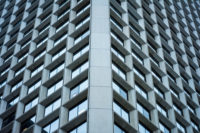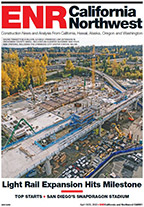The value of new construction starts in April increased 10% from the previous month to a seasonally adjusted annual rate of $698.7 billion, according to Dodge Data & Analytics.
The nonresidential building sector came in particularly strong, lifted by the inclusion of two massive projects as April starts—an $8.1-billion petrochemical plant in Louisiana and a $1.2-billion office/retail high-rise in New York City. Meanwhile, residential building slipped in April, and nonbuilding construction lost momentum as the result of a pullback by public works.
Through the first four months of 2015, total construction starts on an unadjusted basis were reported at $208.2 billion, up 24% from the same period a year ago. The current year has so far witnessed the start of eight massive projects, each valued at more than $1 billion, compared to four such projects during the corresponding period of 2014.
Excluding projects in excess of $1 billion, the result for total construction starts would be a 3% decline in April on a seasonally adjusted basis compared to March, and a 10% gain during the first four months of 2015 on a raw (unadjusted) basis compared to last year.
The April statistics raised the Dodge Index to 148 (2000=100), compared to 134 in March. For the full year 2014, the Dodge Index averaged 124.
“The presence of unusually large projects in early 2015, particularly several liquefied natural gas (LNG) terminals and several petrochemical plants, has elevated the level of activity shown by total construction starts beyond the underlying trend,” said Robert A. Murray, chief economist for Dodge Data & Analytics. “It’s also increased the volatility on a month-to-month basis, with total construction up 16% in February, down 13% in March, and now up 10% in April. Despite these wide swings on a monthly basis, it’s still possible to identify several aspects of how the construction expansion is proceeding in 2015,” Murray said.
“For nonresidential building, the upturn is broadening in scope, with its institutional segment continuing the upward movement established in 2014. For residential building, single-family housing has shown some improvement yet remains hesitant while multifamily housing is generally proceeding at a healthy clip. For nonbuilding construction, the electric power and gas plant segment has provided a substantial near-term boost that will soon recede, while public works is beginning to face constraints after surprisingly resilient activity in early 2015,” he said.
Nonresidential Building
Nonresidential building in April jumped 58% to $288.9 billion (annual rate). Much of the lift came from the manufacturing plant category, which soared 516% due to $8.1 billion estimated for the Sasol ethylene cracker and derivatives complex in Louisiana. If this massive project were excluded, the manufacturing plant category in April would have been down 34%, while total nonresidential building would have seen a more moderate increase of 5%.
Aside from the Sasol project, the manufacturing plant category in April included the start of two tire manufacturing plants, one in Tennessee at $384 million and another in South Carolina at $150 million, as well as a $300-million ammonia production facility in Wyoming.
The commercial building group in April grew 11%, rebounding after a 10% decline in March. The office building category surged 50%, reflecting $1 billion for the office portion of a $1.2-billion high-rise at the Hudson Yards development in New York City.
Other large office projects reported as April starts were a $149-million office building renovation in New York City; a $90-million office building in Sunrise, Fla.; an $80-million office building renovation in Des Moines; and a $77-million renovation project for the U.S. State Dept. at the Harry S. Truman Federal Building in Washington, D.C.
Store construction in April improved 2%, with support coming from $230 million for the retail portion of the Hudson Yards high-rise in New York. Warehouse construction in April climbed 17% after a weak March, but hotel construction dropped 23%.
The institutional building group in April grew 7%, bouncing back after an 8% slide in March. Educational facilities increased 9%, helped by such projects as a $132-million building addition at Texas A&M University in College Station, Texas; a $99-million public school renovation in New York City; and a $90-million facility at Omaha Metropolitan Community College in Omaha.
Through the first four months of 2015, the top five states in terms of new educational facility starts were Texas, New York, California, Georgia and Connecticut. The transportation terminal category jumped 33% in April, reflecting the start of a $405-million renovation project at Grand Central Terminal in New York City, and $403 million for airport terminal work at Orlando International Airport in Orlando.
Health care facilities advanced 18% after a weak March, helped by groundbreaking for a $225-million hospital in Gainesville, Fla., and a $100-million addition to a medical center in Omaha. The amusement and recreational category registered a 15% gain in April, boosted by the start of a $450-million sports arena for the Detroit Red Wings in Detroit. Losing momentum in April were public buildings (courthouses and detention facilities), down 21%; and religious buildings, down 57%.
Residential Building




Post a comment to this article
Report Abusive Comment